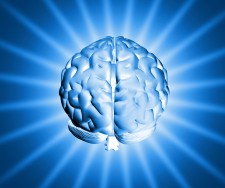 It took roughly 20 years from the time we realized that DNA was the source of genetic material -- proteins were considered, as well -- to decide we should start manipulating it in living humans. At the time the idea was novel, but rather simple: If a gene is broken, why not replace it with one that isn't?
It took roughly 20 years from the time we realized that DNA was the source of genetic material -- proteins were considered, as well -- to decide we should start manipulating it in living humans. At the time the idea was novel, but rather simple: If a gene is broken, why not replace it with one that isn't?
Getting from rhetoric to execution has been difficult, as an effective gene therapy has been elusive. In fact, the first clinical trial of a gene therapy (for Adenosine deaminase deficiency) was 25 years ago, yet we still don't have an approved gene therapy in the United States.
But researchers are getting close, as evident by the announcements in the past week that declare major successes with two different gene therapy regimens. One is for the treatment of glioblastoma, a common brain cancer. The other is for a rare form of night blindness, called Leber s congenital amaurosis, or LCA.
Glioblastoma is the most common, and most aggressive, malignant brain cancer. Over half of all brain tissue tumors stem from this type, and patients with this diagnosis have a five-year survival rate of about 30 percent. The cancer arises from glial cells in the brain. These are cells that support (e.g. providing nutrients) the neurons, which are the functional cells of the brain. Currently treatment is surgery and chemotherapy, but recurrence of the tumor is very high.
The researchers, working at University of Texas Health Science Center at San Antonio, presented the results of the clinical trial at European Cancer Congress meeting in Vienna, Austria. The study used the gene therapy agent VB-111, which actually does not target the cancer cells directly. Instead, the blood vessels supply the tumor, which causes those cells to die. The end result is a starved tumor.
In this study, researchers enrolled 62 patients with recurrent glioblastoma and administered the therapy once every two months. On average, patients who received the gene therapy lived 15 months, almost double the survival time of those patients that received the standard chemotherapy. The scientists also reported that the treatment was well tolerated by patients, with fever being the most common side effect, lasting about two days.
The drug has moved to Phase 3 trials at the Cancer Therapy & Research Center, but will expand to other sites later this year. Glioblastoma is not the only cancer that VB-111 is being tested on. Clinical trials for thyroid cancer and ovarian cancer are on going in Phase 2.
The other gene therapy announcement comes from the pharmaceutical company, Spark Therapeutics, which announced that its treatment for one type of Leber s congenital amaurosis had passed a late-stage clinical trial.
LCA is a rare inherited eye disease that appears early in life and affects about one in 80,000 people. Several types of LCA exist, with slightly different pathologies presenting, depending upon which of as many as 18 genes are mutated. Whichever gene is affected, the result is altered photoreceptor (i.e. the rods and cones) functionality.
Spark's therapy, named SPK-RPE65, targets one of the genes that causes people to have night blindness and deteriorating peripheral vision, which can progress to total blindness.
In the most recent analysis, the company reported that the 21 people with this specific type of LCA who received the gene therapy saw marked improvement in their night vision.
The participants, who received the treatment a year ago, were tested recently and found to be able to navigate a maze with significantly less light than they were able to before receiving treatment. Further, 14 of the participants were able to complete the maze on the lowest light setting, which was equivalent to walking on a moonless summer night.
Some are still concerned with the efficacy of SPK-RPE65. The company did not release the data on the 10 control subjects from this latest trial. In addition, many scientists are unsure of how long the treatment will last.
Spark Therapeutics announced it will file for FDA approval in early next year.
In theory, gene therapy could be a permanent fix for these "broken" genes, but in practice this hasn't been the case -- yet. Just as little as five years ago, gene therapy seemed like a pipe dream. But now it's beginning to look more and more like a reality.


